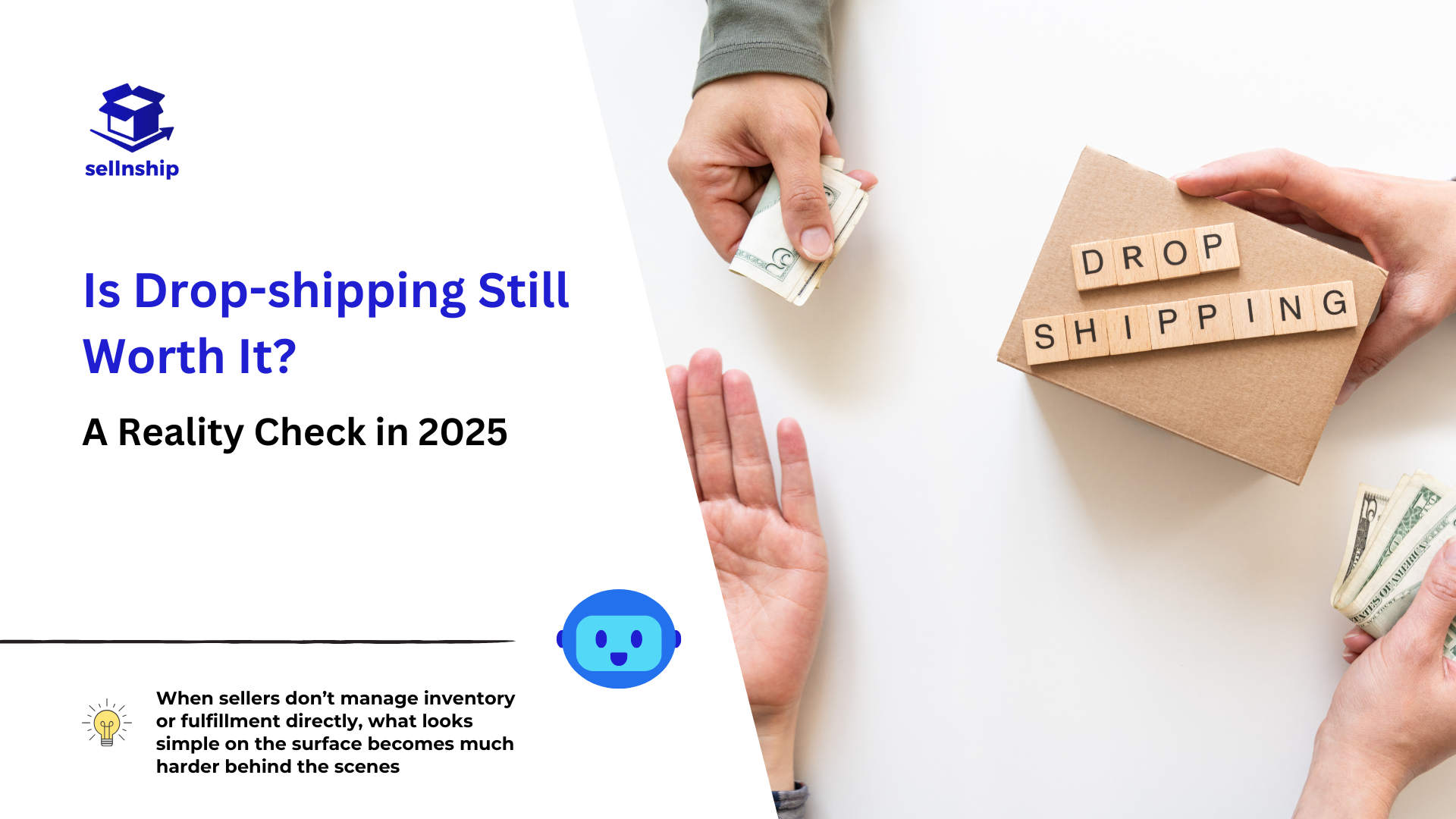Is Drop-shipping Still Worth It? A Reality Check

Drop-shipping was once seen as the easiest way to start an online business—no inventory, no warehouse, and no upfront capital. With just a few clicks on Shopify or Shopee, anyone could launch a store and start selling. But why do so many sellers give up after just a few months?
The problem isn’t the model itself—it’s how it’s run. When sellers don’t manage inventory or fulfillment directly, what looks simple on the surface becomes much harder behind the scenes. This article explores the hidden challenges of drop-shipping, why it often fails, and how to operate it smoothly—even with zero warehouse space.
1. What Drop-shipping Really Is—and Why So Many Quit Early
The Basics
Drop-shipping is a retail model where sellers don’t stock inventory. When a customer places an order, the seller forwards it to a supplier or fulfillment partner who handles packaging and delivery. The seller never touches the product—but still takes full responsibility.
It sounds simple, but drop-shipping is actually a chain of moving parts across multiple parties. If one part breaks—like delayed shipping—the customer experience suffers, and the seller has to fix it.
In short, drop-shipping lowers startup costs, but not accountability. The seller remains the one in charge of the entire shopping journey from the customer's perspective.
Why Many Sellers Fail
Many jump into drop-shipping thinking ads bring orders and backend logistics will take care of themselves. But without control over inventory, shipping, and customer support, sustainable growth becomes impossible.
A common mistake is selling from unreliable sources (like AliExpress) without knowing delivery times or return policies. When customers are dissatisfied and the seller can’t resolve it, the business collapses quickly.
Sellers also tend to skip planning for high-volume periods like flash sales. When orders spike and the system isn’t ready, everything breaks—and so does the seller's brand.
What Modern Shoppers Expect
Customers today—especially in Vietnam and Singapore—expect fast delivery, clear tracking, and reliable post-sale service. If these aren’t delivered, even cheap prices won’t help retain them.
Shopping habits in Southeast Asia differ from the U.S. Mobile-first users check reviews carefully and drop carts instantly if delivery exceeds a few days without clear updates.
That’s why sellers need to evolve. Drop-shipping isn’t just running ads—it’s managing the full user experience, which demands better control over order tracking, fulfillment, and communication.
⚠️ Note: Drop-shipping doesn’t remove responsibility. The seller still controls the full buying experience—from ad to after-sales.
2. The Real Problem: No Inventory, But Still Responsible
Common Misconceptions
Many believe drop-shipping frees them from logistics. But the truth is, not owning inventory doesn’t mean logistics disappears—it just means someone else is doing it, and sellers still need to monitor it closely.
Without direct control over inventory or delivery, issues like out-of-stock items or shipping errors are harder to fix. If a customer asks, “Where is my order?” and there’s no answer, trust is lost instantly.
Ironically, customers can tolerate late delivery—if it’s clearly communicated. What they won’t accept is silence. In drop-shipping, proactive updates and visibility are everything.
Expectations vs. Reality
In markets like Vietnam and Singapore, fast shipping is the norm. Yet, many drop-shippers still sell items shipped internationally without informing customers about delays, leading to high cancellation rates.
Worse, without updated order status, sellers lose customer trust and visibility on platforms. Bad ratings reduce reach, and poor support kills long-term potential.
To succeed with drop-shipping in Southeast Asia, sellers must localize expectations—especially regarding logistics, delivery time, and communication standards.
Why Visibility Matters
Even without a warehouse, sellers must still “see” what’s happening—what orders are being processed, where inventory is low, what’s being delivered next.
Many choose to work with platforms that integrate order tracking, fulfillment, and product sync—giving sellers real-time dashboards without needing their own warehouse.
The point isn’t having a massive system. It’s avoiding blind spots. When sellers can see and act on their logistics data, drop-shipping becomes a real business—not a gamble.
📦 Pro Tip: Use order and inventory tracking tools, even for drop-shipping. Visibility makes the difference between surviving and scaling.
3. Smart Starting Points for Sellers Who Want to Stay in Control
Start Simple
Don’t try to “build a system” like a big company on day one. The best way to begin is using free or lightweight tools that centralize all orders—such as syncing orders from multiple marketplaces into one view.
Even a shared spreadsheet can be powerful—if updated regularly. Knowing where each order is and when it ships is more important than automation in the early days.
Later, as your store grows, more advanced tools like automated tracking, order management software, or fulfillment dashboards can help scale without chaos.
Control First, Then Scale
Never scale until the basics are mastered. Are orders reaching customers? Are responses on time? Are complaints handled well? Without these, more orders mean more problems.
Treat every order like it’s your only order. Once 10 orders/day run smoothly, scaling to 100 becomes possible—with confidence, not fear.
Scaling isn’t just about ads—it’s about operating at volume without breaking. And to do that, sellers need visibility at every step—even when they don’t fulfill orders themselves.
Systems Aren’t Just for Big Business
Many small sellers now use lightweight order/inventory tools early—not because they’re tech-savvy, but because they know: losing track = losing money.
You don’t need to be a developer. You just need a platform that gives you visibility and integrates easily with your supplier or fulfillment partner.
With the right tools, sellers can spend less time chasing logistics—and more time improving products, marketing, and support. That’s what drives long-term drop-shipping success.
✅ Expert Advice: OMS and WMS tools help small sellers operate like pros—no warehouse needed.